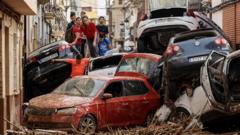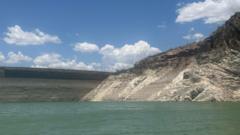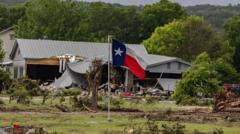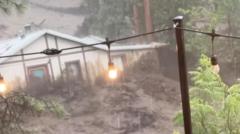As Valencia grapples with the aftermath of devastating floods that led to over 200 fatalities, experts point to various factors, including urban complacency, a dangerous reliance on garages, and climate change exacerbating extreme weather events.
Catastrophic Valencia Floods: A Multi-Factor Breakdown of the Disaster

Catastrophic Valencia Floods: A Multi-Factor Breakdown of the Disaster
Understanding the deadly flash floods that struck Valencia reveals a complex interplay of poor urban planning, extreme rainfall, and climate change.
The recent flash floods in Valencia have left a shadow of tragedy and confusion, leading to over 200 confirmed deaths, particularly striking the town of Paiporta, where the loss of life reached at least 62. While the catastrophic flooding swept through the region, questions surrounding the high death toll are echoing throughout Spain.
Several factors have been cited for this grim outcome. First, an alarming number of victims were trapped in their vehicles as the floods hit suddenly. Many were returning home from work when the deluge surprised them. The alarming footage from Paiporta captured the moment floodwaters rushed through the town, showcasing how vehicles were caught in the chaos. Mayor Maribel Albalat noted that poor preparedness for flooding—especially in a town where such events are rare—contributed significantly to the deadly impact.
The timing of emergency alerts from the civil protection agency also stands under scrutiny. The alert, which was issued shortly after 8 PM local time, may have come too late. Reports indicate that many who received the warning were already facing rising waters, making escape difficult. In addition, the unyielding combination of severe weather, poor urban planning with low-lying housing, and underground garages created hazardous conditions for residents.
In some neighborhoods, particularly La Torre, people, following routine behavior during rainy days, descended into garages to escape the flooding, leading to tragic outcomes—in one instance resulting in seven fatalities when individuals were trapped inside a residential garage. In the chaos of the floods, the A3 motorway became a river, ensnaring vehicles in surging waters, leaving motorists questioning whether to stay in their cars or attempt escape.
Additionally, the structural evolution of Valencia posed challenges in disaster resilience. With much of the land increasingly covered by impermeable materials due to unchecked development, the ground struggled to absorb rainfall effectively. As scientifically underscored by the World Weather Attribution organization, climate change played a significant role, with rainfall rates 12% higher than what would have been expected in a stable climate.
As Valencia collectively mourns the lives lost in this calamity and grapples with fears of future rainfall alerts, it sparks a critical dialogue regarding infrastructure planning and climate resilience. It serves as a sobering reminder of the need for comprehensive strategies to safeguard cities against increasingly unpredictable weather patterns.






















